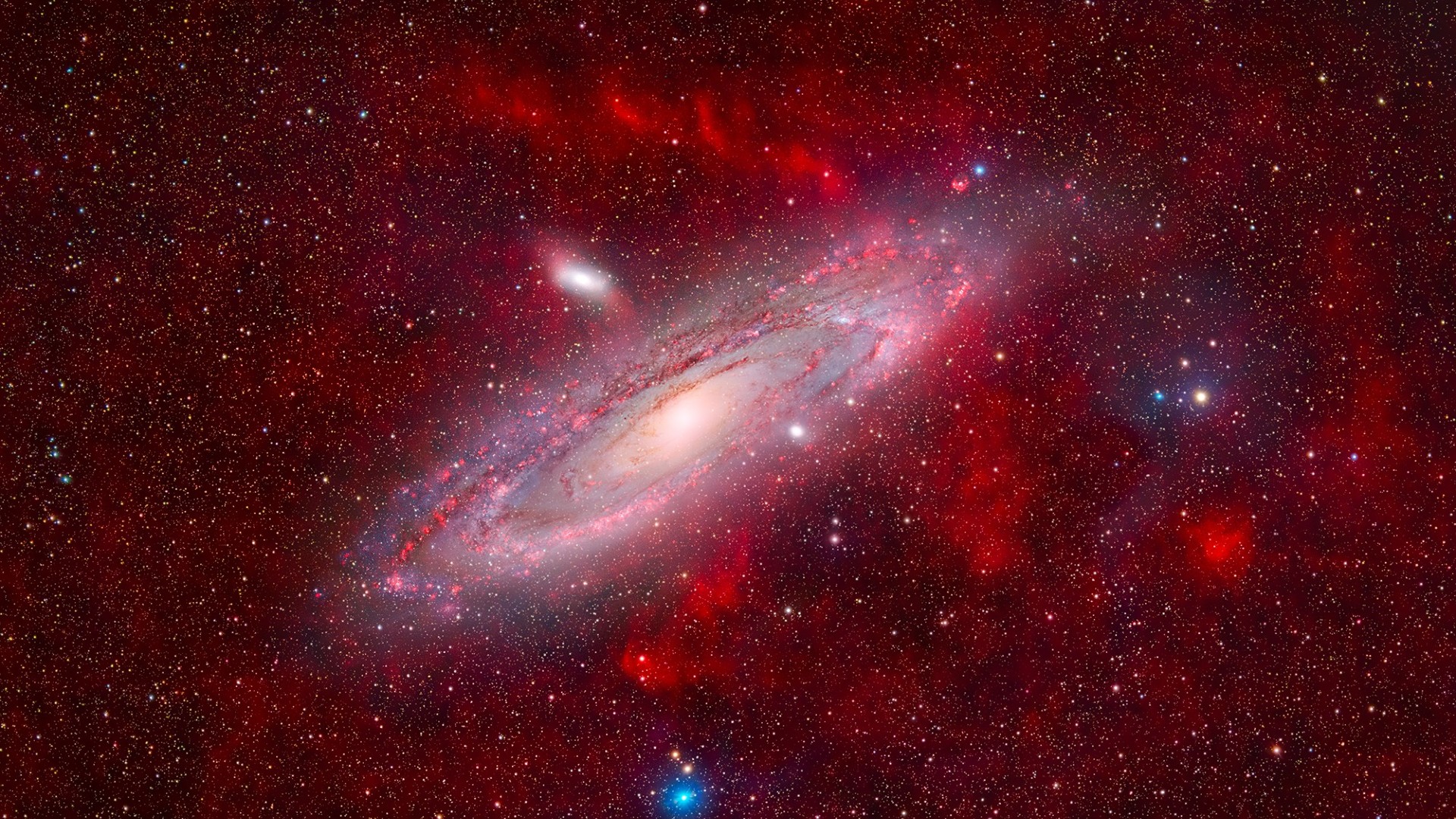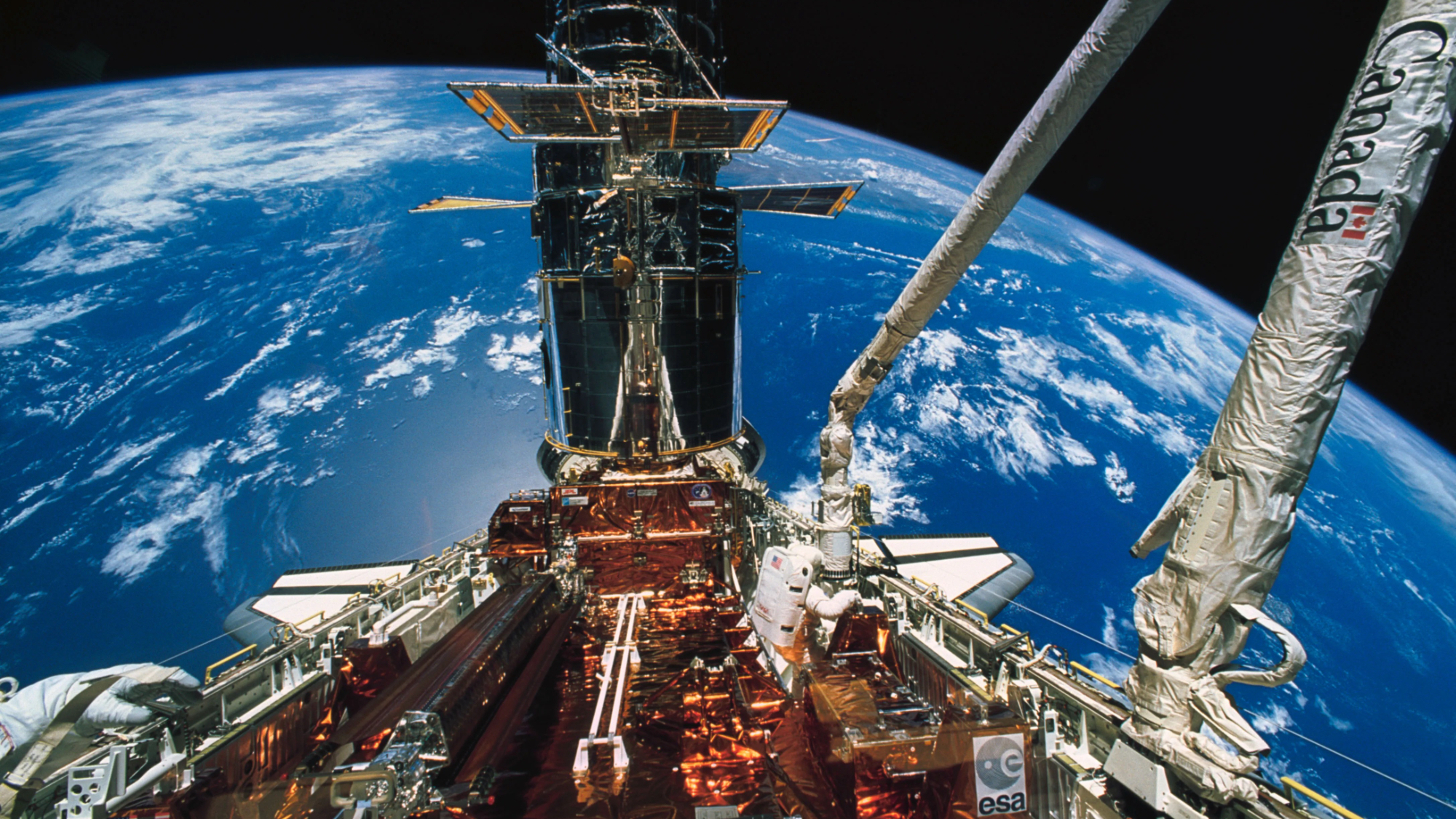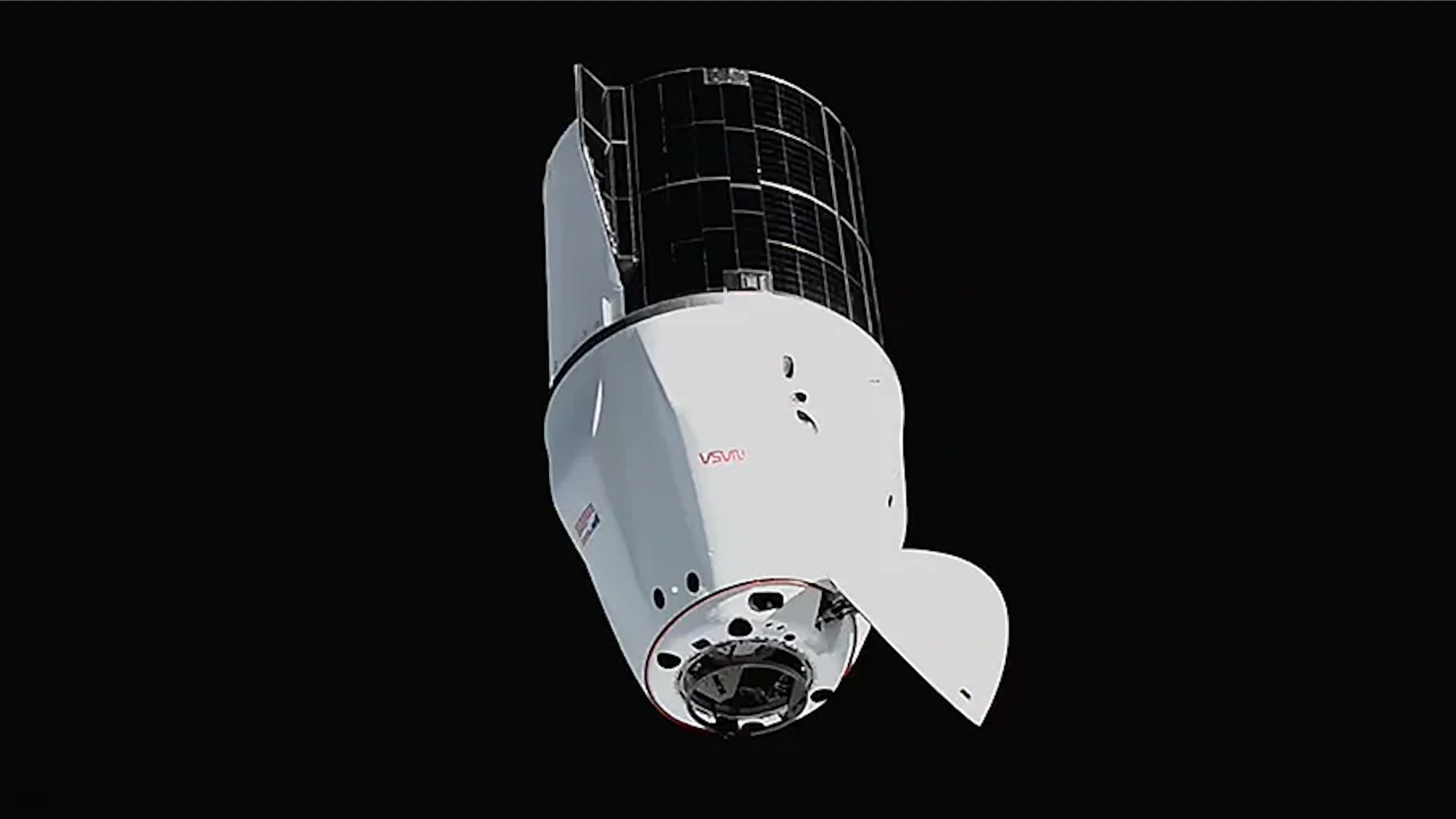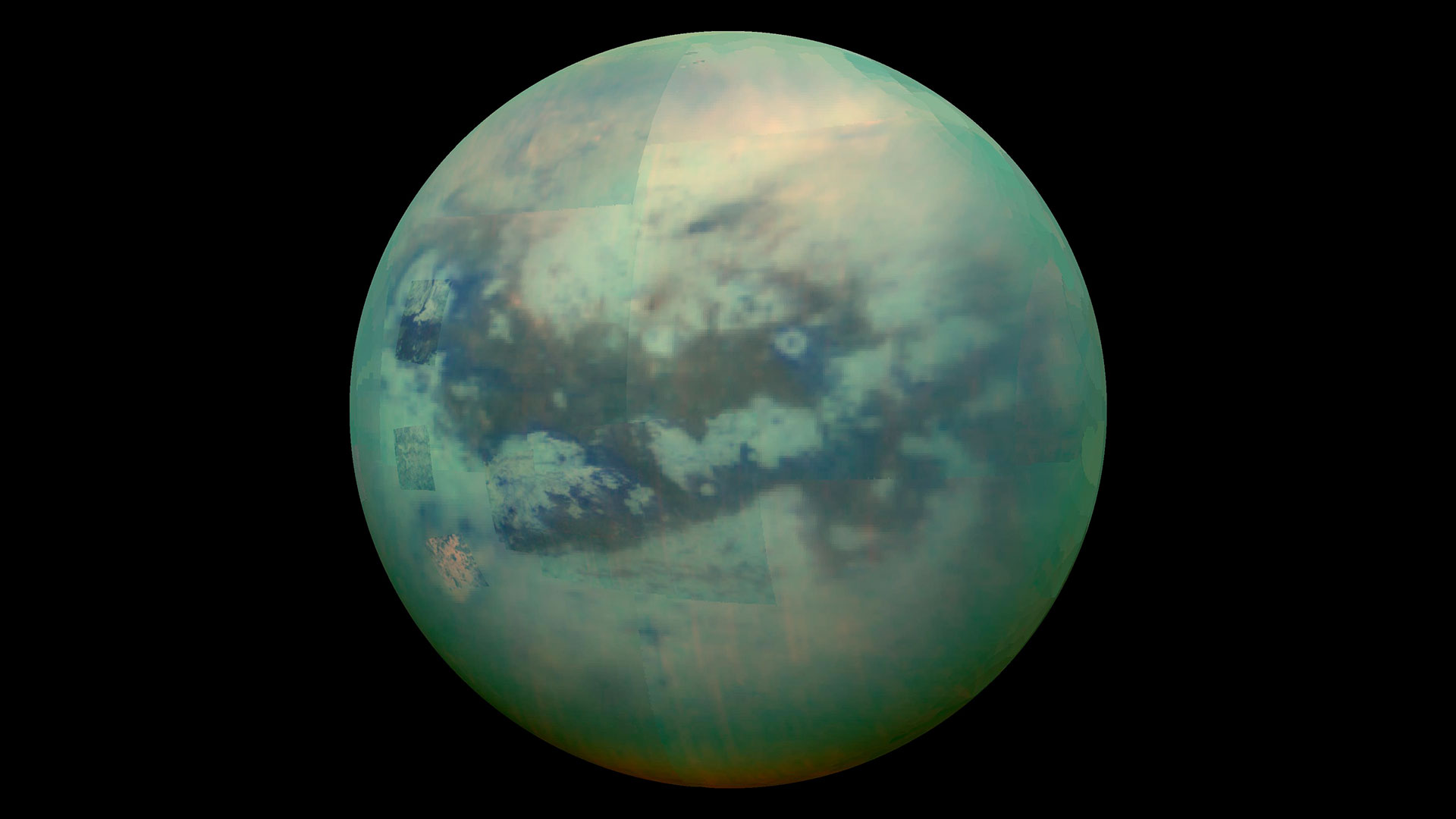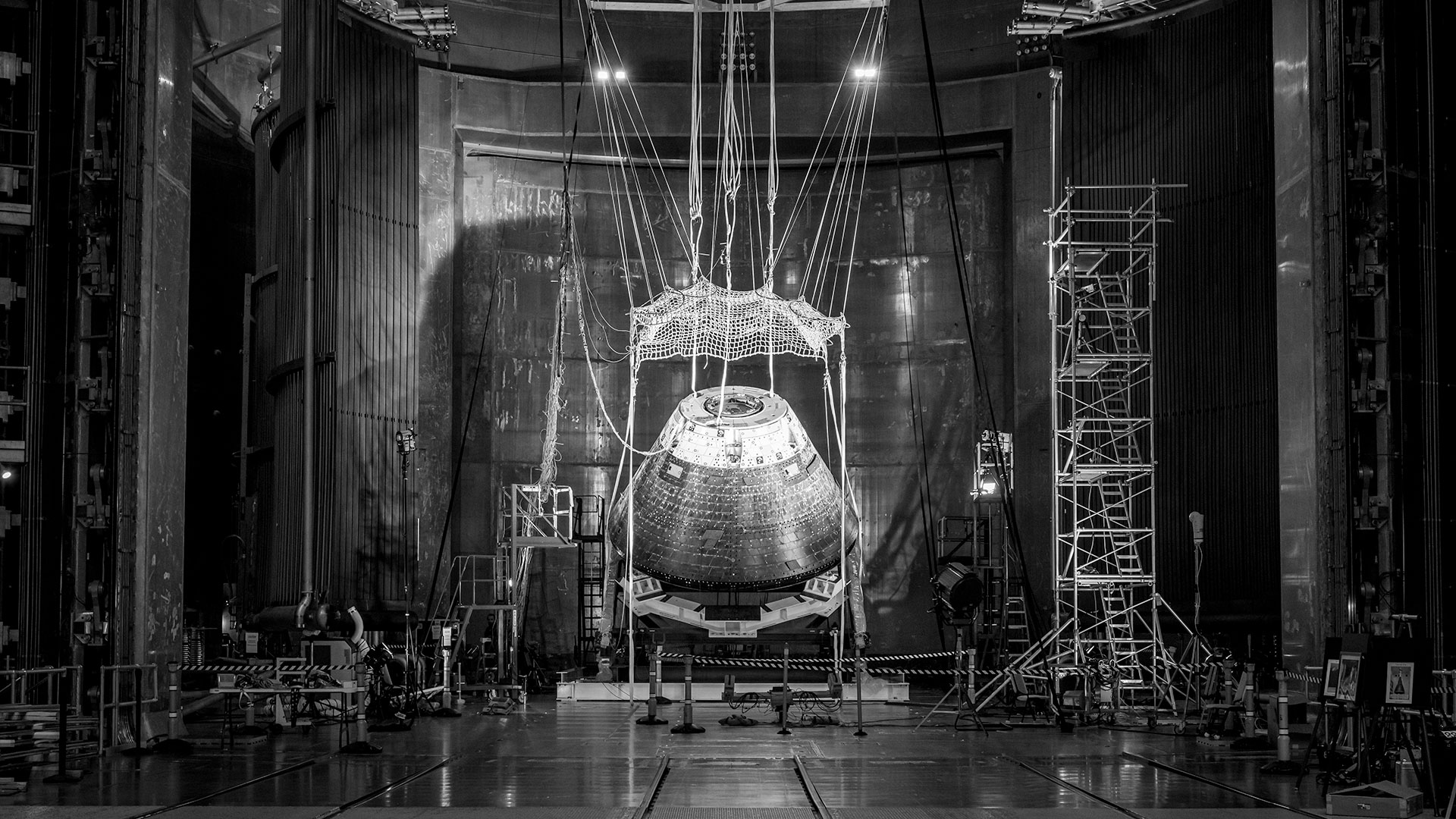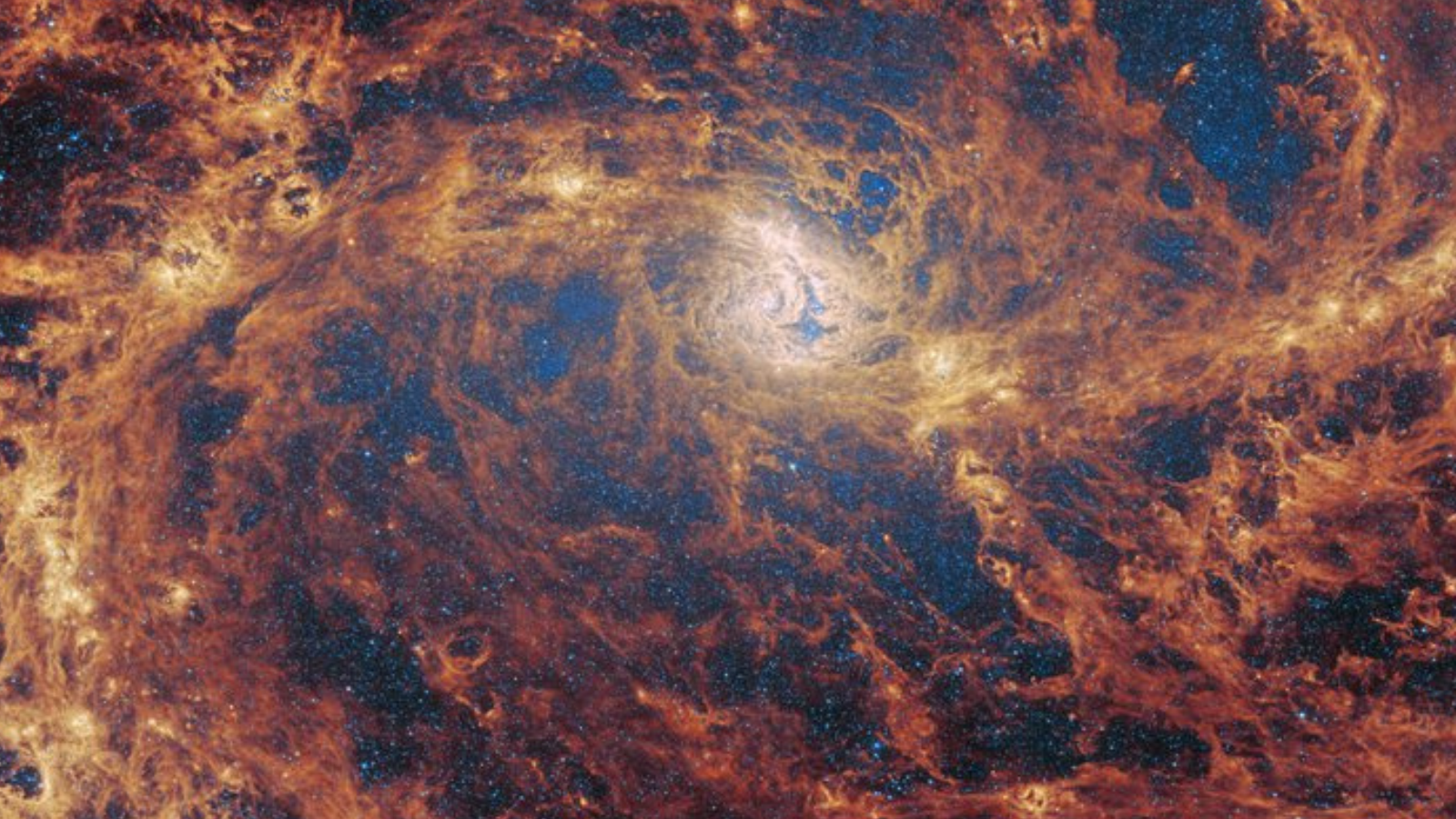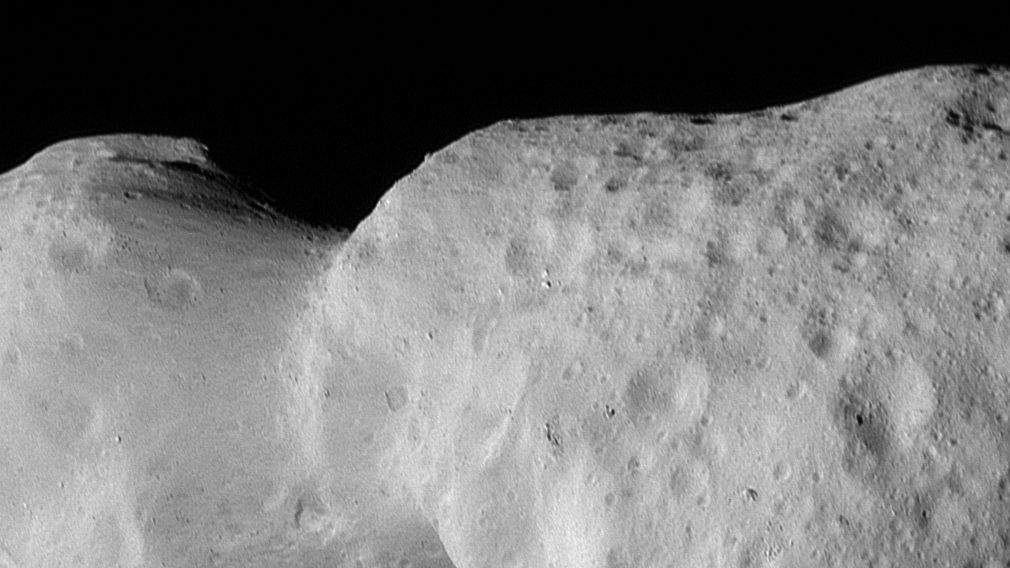SpaceX will launch 2 private lunar landers this week, kicking off busy year for moon missions
There are so many missions flying to the moon this year, they had to fit two on one rocket.
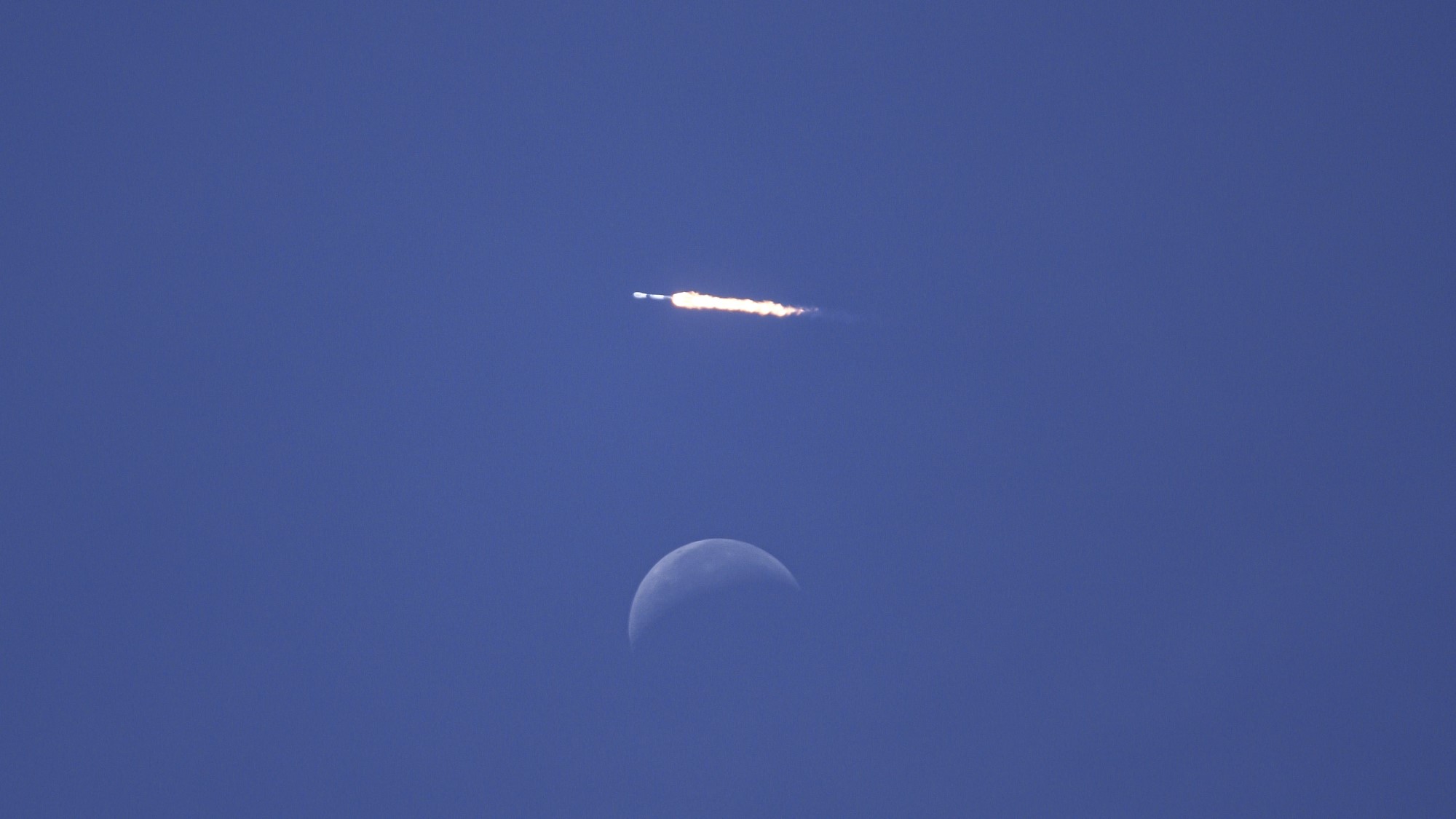
Two private lunar landers are set to launch this week aboard the same rocket, kicking off a busy year of missions to the moon.
A six-day window for the SpaceX Falcon 9 rocket launching the missions begins early Wednesday morning (Jan. 15), with liftoff scheduled for 1:11 a.m. EST (0611 GMT) from Launch Complex-39B at NASA's Kennedy Space Center (KSC) in Florida.
The Falcon 9 will carry both landers to Earth orbit, where each will begin independent trajectories toward the moon. Ghost Riders in the Sky, the mission for Firefly Aerospace's Blue Ghost Mission 1 lunar lander, is part of NASA's Commercial Lunar Payload Services (CLPS) program to deliver scientific payloads to the surface of the moon. The second lander, Resilience, comes from Japan-based company ispace, and is the second mission the company has flown in an attempt to land on the moon. ispace's Mission 2 will deploy after Blue Ghost and will take about four times longer to complete its mission.
Blue Ghost will spend 25 days orbiting Earth ahead of an engine burn to set its trajectory toward the moon. After another 20 days — four in transit, plus another 16 in lunar orbit — if everything performs nominally, the lander will autonomously touch down in Mare Crisium ("Sea of Crises") to begin two weeks of lunar science.
Blue Ghost's 60-day mission from Earth to the moon will end about five hours after night falls on the lander's location. The spacecraft will preserve the last of its battery power to capture an image of the lunar sunset before powering down.
Related: Double moon mission! SpaceX to launch 2 private lunar landers in January
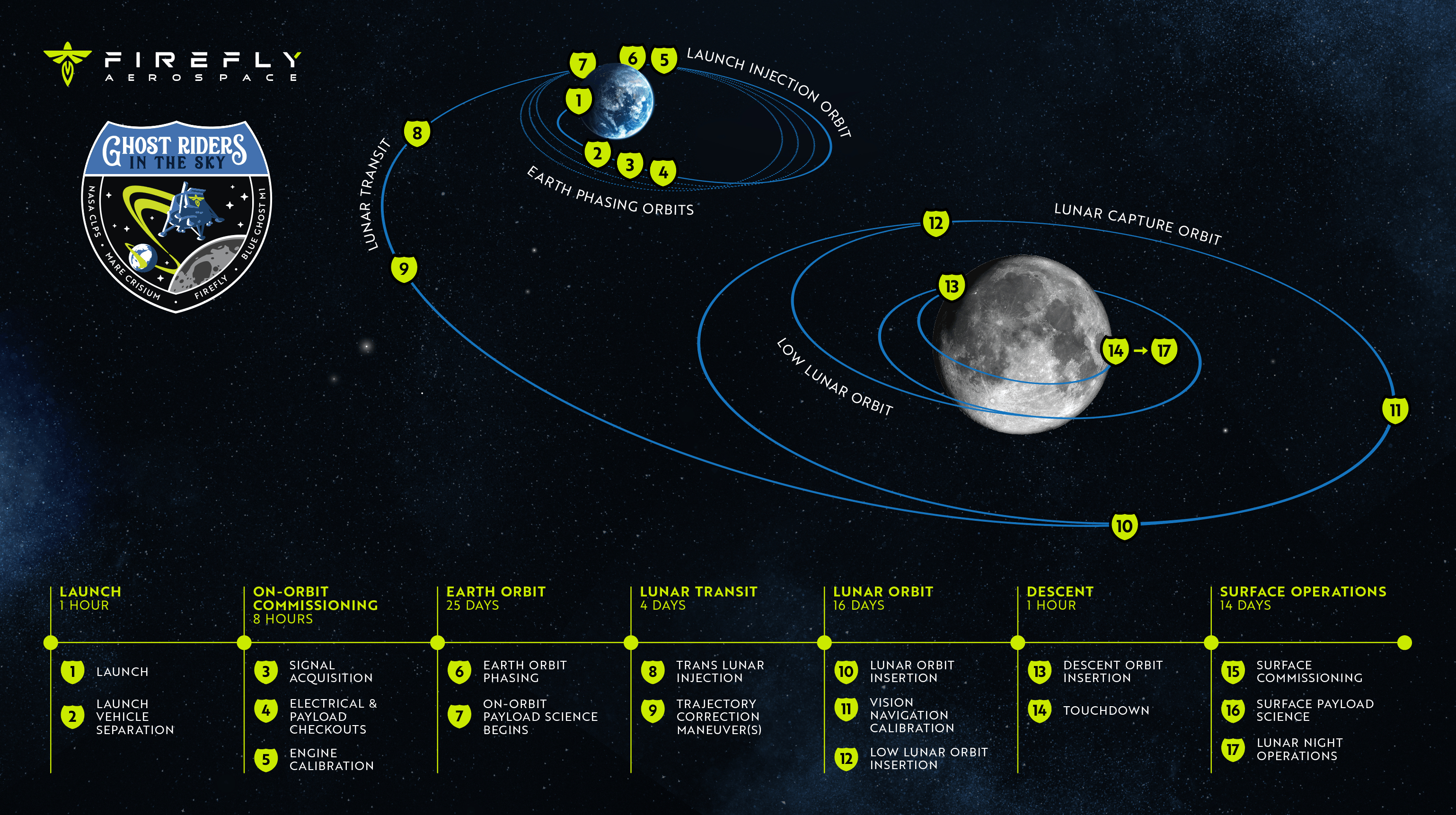
The Resilience lander will fly a much slower trajectory to the moon, with landing targeted for four to five months after launch. The second mission for ispace's Hakuto-R program, Resilience is equipped with hardware and software upgrades based on lessons learned during Hakuto-R Mission 1. That mission successfully reached lunar orbit but failed its landing attempt in April 2023, after an altitude sensor on the lander didn't perform as expected, resulting in a crash on the lunar surface.
Get the Space.com Newsletter
Breaking space news, the latest updates on rocket launches, skywatching events and more!
ispace is taking a step-by-step approach with Hakuto-R Mission 2, laying out a 10-step list of milestones Resilience will complete on its way to the moon, with a separate checklist for goals reached following a successful touchdown on the lunar surface. The lander is aiming for Mare Frigoris (Sea of Cold), in the moon's northern hemisphere, where it will begin surface operations, including the deployment of an onboard microrover named Tenacious, which will collect a sample of regolith (moon dust) as part of a contract with NASA.
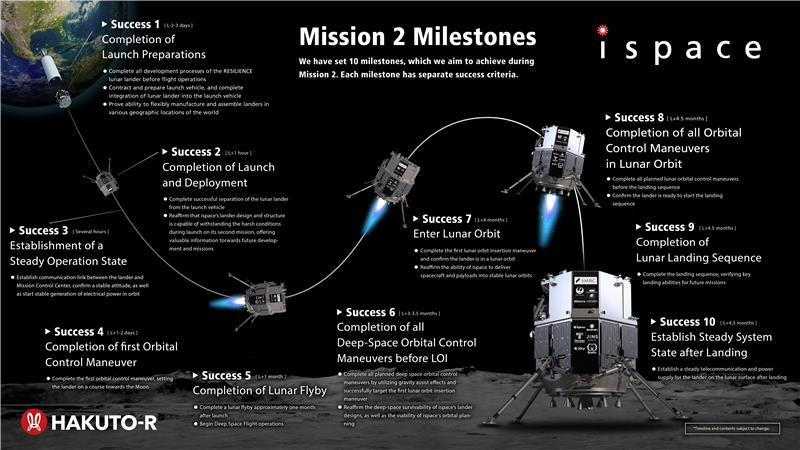
More moon missions in months ahead
This week's Falcon 9 launch to the moon will be followed, in relatively short order, by that of another lunar launder, this time from the only private company to have successfully landed on the lunar surface to date.
Intuitive Machines launched its first Nova-C lander, named Odysseus, in February 2024, which carried six NASA CLPS payloads in combination with another half dozen commercial payloads. On that mission, known as IM-1, Odysseus executed a mostly successful landing near the crater Malapert A, about 190 miles (300 kilometers) from the lunar south pole.
IM-2 is expected to launch sometime in February, and is also headed to the moon's south polar region — this time, to the Mons Mouton region located some 100 miles (160 km) from the south pole, the closest location to the pole ever attempted. IM-2 will carry a number of CLPS payloads for NASA, including an instrument called PRIME-1 (Polar Resources Ice Mining Experiment-1) that will help confirm the abundance of water ice in the area.
A third Nova-C lander will deliver another round of CLPS experiments and technology demonstrations to the lunar surface for the space agency, and is slated to launch sometime later in 2025 on the IM-3 mission.
Pittsburgh-based company Astrobotic is also targeting this year for its Griffin Mission One, another probe carrying NASA CLPS payloads. The company's Peregrine lunar lander launched last year but failed to reach the moon due to a fuel leak. Instead, the probe's handlers brought it back to Earth, where it burned up during atmospheric reentry above the Pacific Ocean.
NASA's many CLPS contracts are focused on forwarding the efforts of the agency's Artemis program, which aims to land astronauts on the moon in 2027, and eventually to set up a base in the lunar southern polar region, where water ice appears to be plentiful. Similar to CLPS, NASA awarded Human Landing Services (HLS) contracts to companies to deliver astronauts to the surface of the moon. SpaceX's Starship rocket won NASA's first HLS contract and is expected to launch dozens of test flights in 2025, including, possibly, one around the moon.
Blue Origin won NASA's second HLS contract, tapping the company's Blue Moon lander to deliver astronauts to the lunar surface for missions beyond Artemis 3.
Editor's note: This story was updated on Jan. 14 to reflect the most recent landing site location for the IM-2 mission.
Join our Space Forums to keep talking space on the latest missions, night sky and more! And if you have a news tip, correction or comment, let us know at: community@space.com.
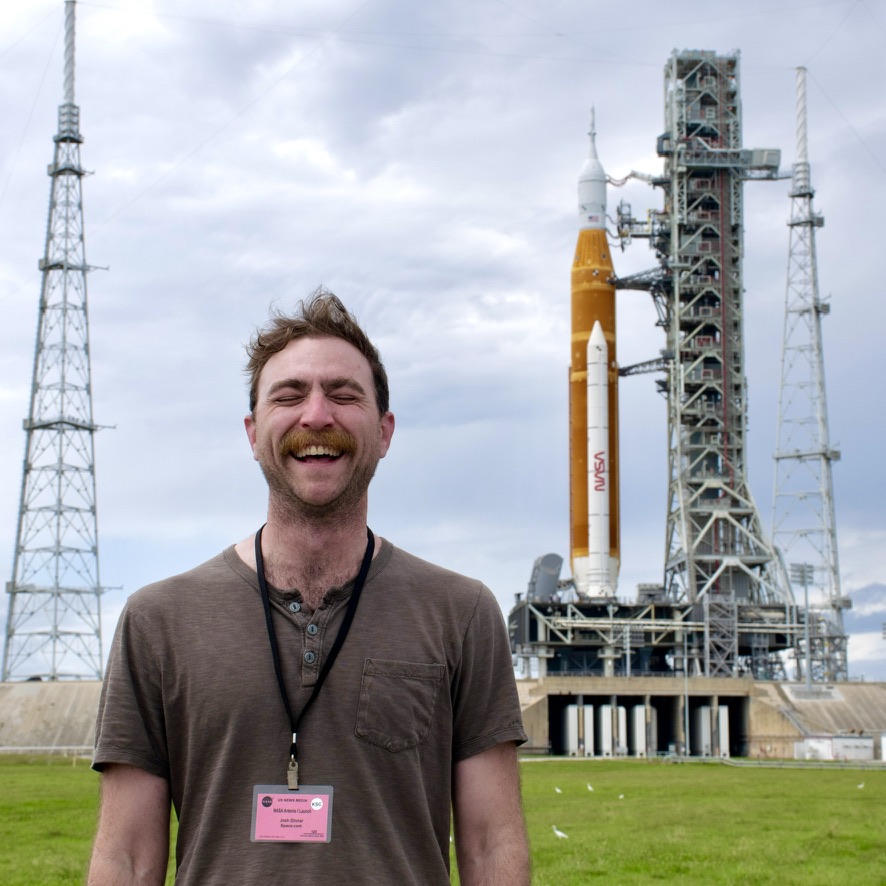
Josh Dinner is the Staff Writer for Spaceflight at Space.com. He is a writer and photographer with a passion for science and space exploration, and has been working the space beat since 2016. Josh has covered the evolution of NASA's commercial spaceflight partnerships and crewed missions from the Space Coast, as well as NASA science missions and more. He also enjoys building 1:144-scale model rockets and human-flown spacecraft. Find some of Josh's launch photography on Instagram and his website, and follow him on X, where he mostly posts in haiku.
